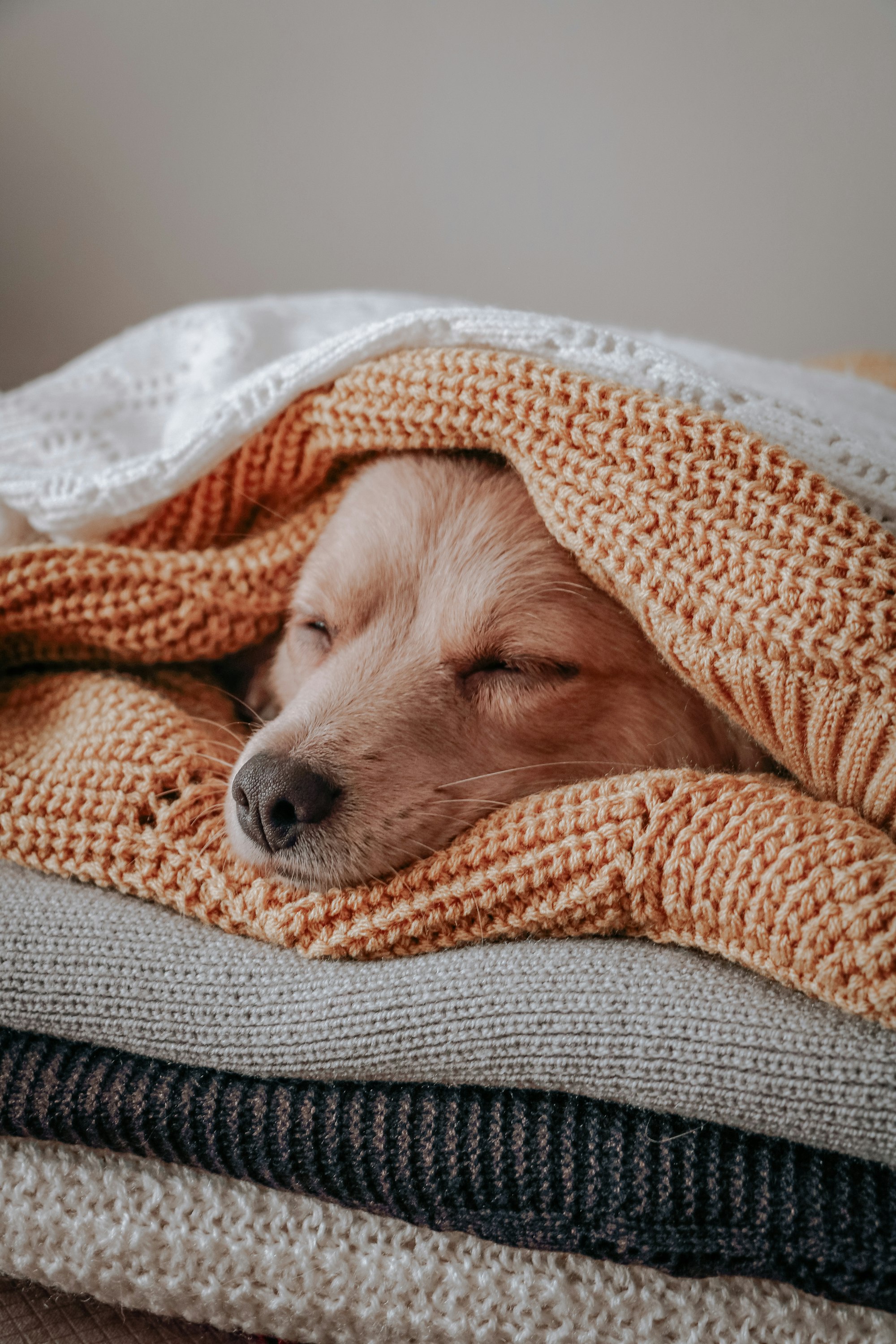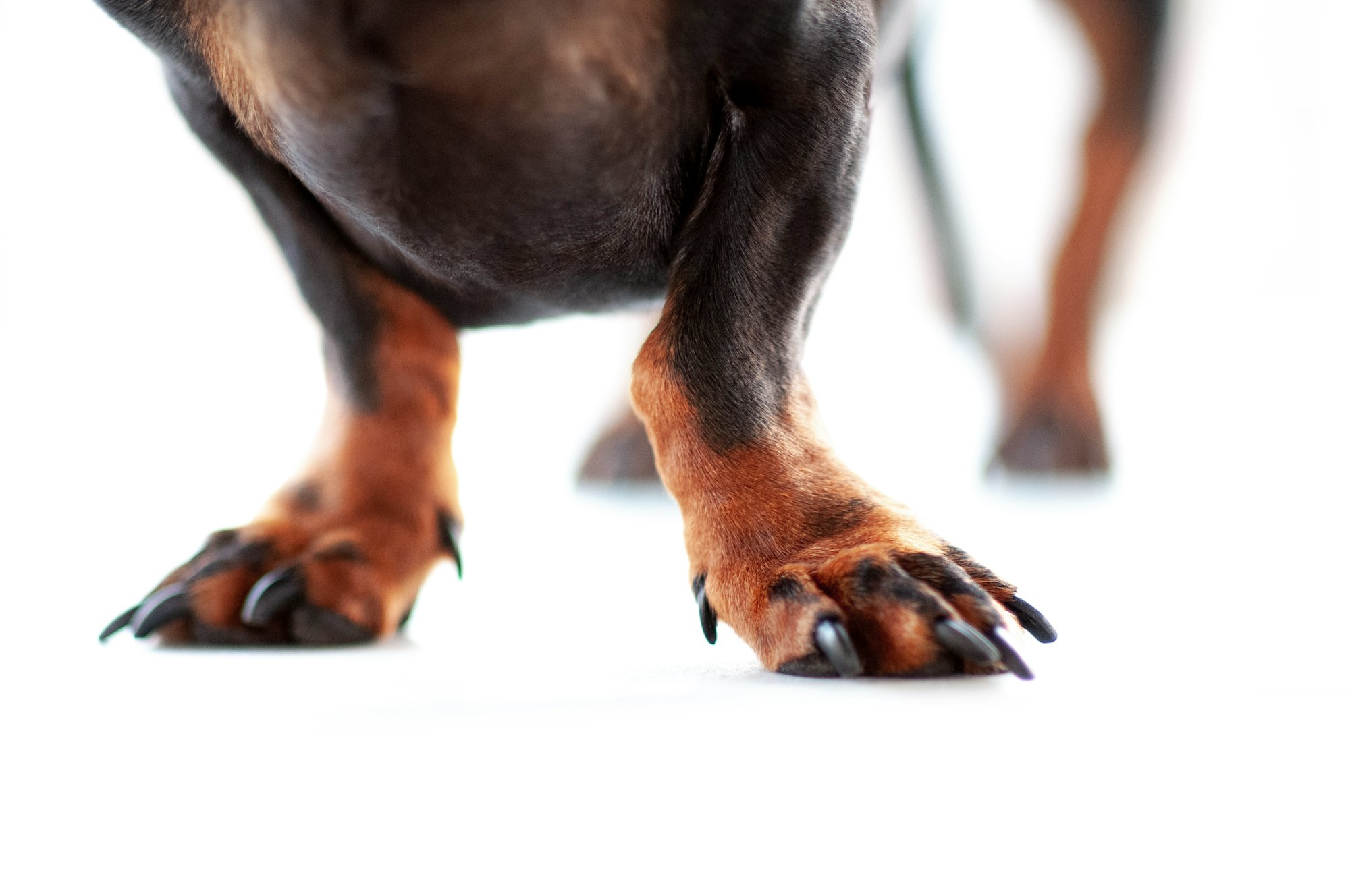Dogs are known for their playful and animated tail wagging, which can signal their excitement, happiness, or even aggression. But what about when dogs wag their tails in their sleep? Have you ever wondered what this behavior means, or whether it has any significance? While dogs' sleeping patterns are often mysterious to us, there may be some interesting explanations for why dogs wag their tails in their sleep.
There are many reasons to explain this. Maybe your pup is excited, fearful, has sleep disorders, or is just having a restful night. In this article, we'll explore some of the theories and science behind this intriguing behavior.
Why do dogs wag their tails while sleeping?
Dogs wag their tail during the REM sleep cycle. This is the only time your dog will relax, so they find it helpful to wag their tail while resting. They might not know what’s happening, but they’ll be at ease, knowing everything is fine.
During the Rapid Eye Movement, your dog is always in the deepest state of sleep. This is the only time your dog can dream and get the best sleep ever. However, your dog can start wagging its tail for many reasons while in the REM sleep cycle. These reasons include the following:
- Your dog may be sleeping soundly
- Your dog may be in deep sleep
Is it True That Dogs are Happy When They Wag Their Tail While Asleep?
The most common reason you’ll see your dog having a good dream is that your friend is happy. This happiness will result in your dog wagging tail in sleep as they dream. It’s natural for your dog to wag its tail when they’re happy.
Once your furry friend gets into the REM sleep cycle, it will start to dream. Some of the things that could lead to happy dreams include:
- It may be the first time your dog sees you
- Your dog could be chasing a tennis ball or Frisbee
- Your dog is just happy to sleep next to you
- Lastly, your pet friend has made a new friend
Does Your Dog Have a Happy Dream?
It’s possible to tell if your dog has a happy dream. The first thing you’ll notice is his wagging tail in sleep. Your dog may dream of many happy things, including catching a Frisbee, imagining going for a walk, or even being happy to be with you.
Other than wagging its tail, your dog can display other movements throughout their Rapid Eye Movement. These include:
- Having some barks and yaps
- Twitching their legs and ears
- Sleepwalking
When your dog has a happy dream, you don’t need to worry about its tail wagging or other signs. It’s not bad for your pet friend to have a good dream.

Your Pup is Feeling Content and Wagging Their Tail
You may also notice your dog wagging its tail in sleep when it’s content. Don’t mistake contentment for happiness. When your dog is content, it experiences the following:
- Your dog feels relaxed and carefree
- They feel a simple and serene sigh
- They feel like they’re close to you while asleep.
- They raise their tail so high when wagging
Contentment is a great feeling for your dog, so you should not interrupt them from their dream. That’s their life, so allow them to enjoy it.
Your Dog May Wag its Tail to Show Excitement
Excitement is also another sleep emotion that can lead to excessive tail wagging. As much as you believe that excitement happens typically during the day, dreams too can be so exciting that they make your dog wag its tail. To be sure that your dog is excited while sleeping, look at some of the following signs:
- Your dog may start barking and yapping loudly during their dreams.
- Your pup may run around while sleeping
- You may notice your dog smiling while sleeping
- You may notice excessive and excited tail wagging
When you notice these signs, don’t wake your dog up. You can try to calm them down by petting them gently and talking in a smooth voice to avoid them hurting themselves from excitement.
Your Dog Can Wag Its Tail to Show Confidence
Confidence is a good virtue for your dog to have, especially when sleeping. This will give you peace of mind, knowing they feel safe when you’re not around. When your dog has a good dream, it’ll start wagging its tail as a sign of confidence. For instance, your dog might dream of catching a ball, or your friend is confident it will catch that ball anyway!

Your Dog May be Scared and Wagging Their Tail
Just like humans, dogs can also get scared at some point. And to show that they’re scared, they’ll start wagging their tail to show that they’re frightened.
The reason for the fright might be a bad dream or nightmares. Aside from wagging their tail, they might also start whining and crying while heavily breathing.
Don’t panic or wake your pup up when you notice this. Instead, soothe them and try talking to them in a calm voice while petting them gently. Show them some love, calming them down quickly, and getting them back to sleep.
Your Dog May Wag Their Tail When It’s Cold
Your dog may wag its tail when it’s cold. Besides a wagging tail, your dog may also show other signs due to cold. These include:
- Shivering and shaking
- Your dog’s teeth may chatter when asleep
- Your pup may also breathe heavily
- Your dog may develop tremors
When your pup is cold, try to find a way to warm them up, even if you have to get a dog blanket to keep your pet friend cozy and warm. Your body heat or a space heater can also keep your dog warm.
Does Tail Wagging Affect Your Dog’s Quality of Sleep?
A tail wagging is proof that your dog is having a good dream while sleeping. It doesn’t indicate that your dog is a light sleeper but could mean that they’re in deep slumber. Simply put, tail wagging indicates that your pup is sleeping deeply and enjoying every bit of it.
Is It Important to Pay Attention to Your Dog’s Sleep Wagging?
Yes, paying close attention to “why is my dog wagging tail in sleep” is important. This usually shows that your dog is having a good sleep. However, when other actions come into play, you need to watch out, as something more serious might happen to your dog.

Are There Any Risk Factors Related to Dog Wagging Tail in Sleep?
Yes, sleep wagging is not only associated with good things. Your dog could be going through a certain disorder, making them wag its tail. This is very rare, but it’s always possible that something is wrong with your dog.
Some of the sleep disorders that your dog could be grappling with include the following:
- Narcolepsy
- Insomnia
- Sleep Apnea
What is Narcolepsy?
Narcolepsy is a sleep disorder that makes your dog’s muscles paralyzed. This may result from low levels of a chemical that controls alertness and sleep patterns. Other signs may include:
- Lack of daytime activity and excessive sleepiness.
- Your dog is falling asleep at random times.
- Your dog’s legs may stiffen up and become rigid like a board
- Your dog’s spine may be too relaxed or not straight.
Your Dog Is Having Insomnia
Insomnia isn’t common with dogs, but your dog can be a victim. When your dog is ill, whether suffering from a physical illness or generally feeling unwell, it can develop insomnia.
Age is also a determinant when it comes to insomnia, as older dogs may experience sleep problems, unlike young dogs. Here are the signs of insomnia that you may notice with your pup:
- Your dog may start pacing back and forth across the floor before bedtime.
- You may notice your dog’s tongue hanging out, or your dog may pant as if the weather is extremely hot.
- Your dog may start howling, barking, grunting, and even whining during bedtime.
Your Dog Is Having Sleep Apnea
Sleep apnea is another disorder you need to worry about if you see your dog wagging tail in sleep. Age is also a determining factor here. Obese and older dogs are more prone to sleep apnea than young dogs.
Sleep apnea may cause a temporary collapse of the airway, causing your dog to struggle to breathe. They may show this by twitching their tail.
Other signs of sleep apnea include:
- Your dog may struggle to breathe
- Your pup looks extremely tired during the day
- Loud snoring while sleeping
- Not friendly with everyone, including you
- Vocalization throughout the day
When you notice these signs and symptoms in your dog, don’t take it lightly; instead, take your dog to the vet for a checkup and even treatment.
Final Thought
The next time you’re wondering, ‘why is my dog wagging tail in sleep,’ think of the above things. Maybe your dog is just feeling happy and content. Other times, it may be going through some stress or being scared of something.
Monitor their behavior when they wake up from sleep? Do they look happy and satisfied, or are they distressed? The reaction afterwards will tell you whether the wagging is a good sign or you have something to worry about.
If you find the reasons are more than just tail wagging, take your pup to the vet for a checkup. Dogs are also pack animals, so they need your attention more than anything else. So ensure you understand them fully and are always there for them.
For additional pet-parenting tips, head over to TryFi.com's Off Leash blog.
And don't forget to check out TryFi's innovative Fi Dog Collar, which offers GPS tracking, activity monitoring, and escape alerts to keep your furry friend safe. Try the Fi Dog Collar today!

